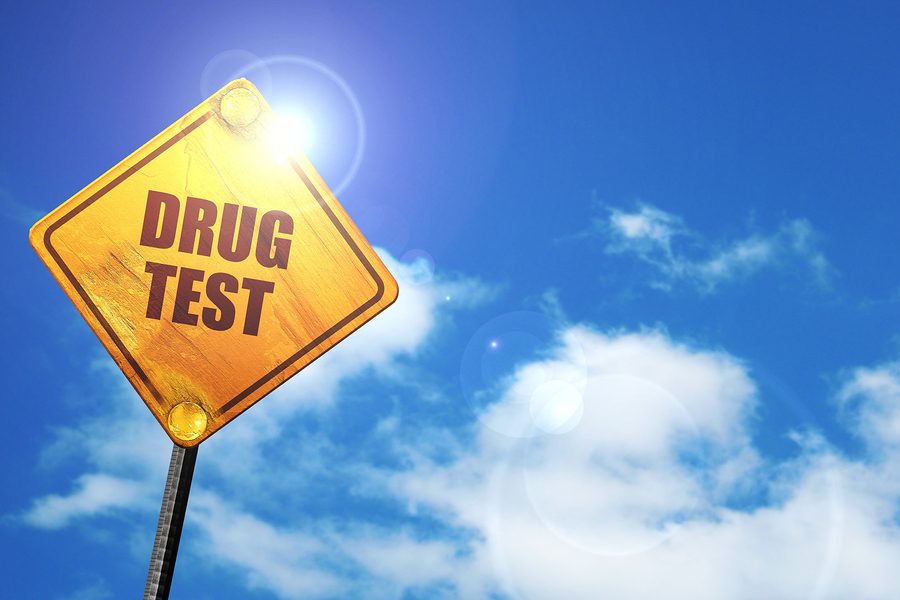Drug use in the American workforce, fueled by illicit drugs including cocaine, reached the highest positivity rate in 12 years last year, according to an analysis of more than 10 million workforce drug test results.
Overall positivity in drug testing among the combined U.S. workforce in 2016 was 4.2 percent, a five percent relative increase over the previous year’s rate of 4.0 percent, and the highest annual positivity rate since 2004 (4.5 percent), according to the annual Quest Diagnostics Drug Testing Index, which will be presented at the Drug and Alcohol Testing Industry Association annual conference this week.
“This year’s findings are remarkable because they show increased rates of drug positivity for the most common illicit drugs across virtually all drug test specimen types and in all testing populations,” said Barry Sample, PhD, senior director, science and technology, for Quest Diagnostics. “Our analysis suggests that employers committed to creating a safe, drug-free work environment should be alert to the potential for drug use among their workforce.”
The Quest Diagnostics Drug Testing Index (DTI) examines test results according to three categories of workers: federally-mandated, safety-sensitive workers; the general workforce; and the combined U.S. workforce. Federally-mandated, safety-sensitive workers include pilots, bus and truck drivers, and workers in nuclear power plants, for whom routine drug testing is mandated by the U.S. Department of Transportation and the Nuclear Regulatory Commission.
(Quest has produced an interactive map that shows urine drug test positivity by 3-digit zip code in the United States.)
Cocaine Upward Trend
The positivity rate in urine testing for cocaine increased for the fourth consecutive year in the general U.S. workforce and for the second consecutive year in the federally-mandated, safety-sensitive workforce. Cocaine positivity increased 12 percent in 2016, reaching a seven-year high of 0.28 percent, compared to 0.25 percent in 2015 in the general U.S. workforce, and seven percent among federally-mandated, safety-sensitive workers to 0.28 percent, compared to 0.26 percent in 2015.
“While the national dialogue swirls around marijuana and opiate issues, we find cocaine—a substance with well-established dangers—continuing its troubling upswing not just in the general workforce, but in safety-sensitive jobs with federally-mandated testing,” said Matt Nieman, general counsel, Institute for a Drug-Free Workplace.
In both the federally-mandated, safety-sensitive and the general U.S. workforces, the positivity rate for cocaine in post-accident urine drug tests was more than twice that of pre-employment drug tests, and was also higher than the rate in random drug tests.
“While a positive test doesn’t prove drug use caused the accident, it raises the question as to whether it played a role,” said Dr. Sample.
Marijuana Positivity
Marijuana positivity continued its upward climb in both the federally-mandated, safety-sensitive and general U.S. workforces. In oral fluid testing, which detects recent drug use, marijuana positivity increased nearly 75 percent, from 5.1 percent in 2013 to 8.9 percent in 2016 in the general U.S. workforce. Marijuana positivity also increased in both urine testing (2.4 percent in 2015 versus 2.5 percent in 2016) and hair testing (7.0 percent in 2015 versus 7.3 percent in 2016) in the same population.
Among the federally-mandated, safety-sensitive workforce, which only utilizes urine testing, marijuana positivity increased nearly 10 percent (0.71 percent in 2015 versus 0.78 percent in 2016), the largest year-over-year increase in five years.
In Colorado and Washington, the first states in which recreational marijuana use was legalized, the overall urine positivity rate for marijuana outpaced the national average in 2016 for the first time since the statutes took effect. The increase was more pronounced in Colorado, which increased 11 percent (2.61 percent in 2015 versus 2.90 percent in 2016), than in Washington, which increased nine percent (2.82 percent in 2015 versus 3.08 percent in 2016). The national positivity rate for marijuana in the general U.S. workforce in urine testing increased four percent (2.4 percent in 2015 compared to 2.5 percent in 2016).
Methamphetamine Positivity
Amphetamines (which includes amphetamine and methamphetamine) positivity continued its year-over-year upward trend, increasing more than eight percent in urine testing in both the general U.S. and federally-mandated, safety-sensitive workforces compared to 2015. Throughout the last decade, this rise has been driven primarily by amphetamine use which includes certain prescription drugs such as Adderall.
Although methamphetamine positivity in urine testing declined between 2005 and 2008, the positivity rate plateaued between 2008 and 2012, and has increased steadily since. Between 2012 and 2016, it climbed 64 percent in the general U.S. workforce and 14 percent among federally-mandated, safety-sensitive workers.
Heroin Detection
After four straight years of increases, in 2016, urine testing positivity for heroin held steady in the general U.S. workforce and declined slightly among federally-mandated, safety-sensitive workers.
Prescription opiate positivity – including hydrocodone, hydromorphone and oxycodones – declined in urine testing among the general U.S. workforce. Oxycodones have exhibited four consecutive years of declines, dropping 28 percent from 0.96 percent in 2012 to 0.69 percent in 2016. Hydrocodone and hydromorphone both showed double-digit declines in both 2015 and 2016 (0.92 percent in 2015 to 0.81 percent in 2016) and (0.67 percent in 2015 to 0.59 percent in 2016), respectively.
Quest Diagnostics has analyzed annual workplace drug testing data since 1988.
Was this article valuable?
Here are more articles you may enjoy.


 NYT Asks Judge to Dismiss Trump’s ‘Implausible’ Defamation Suit
NYT Asks Judge to Dismiss Trump’s ‘Implausible’ Defamation Suit  Tricolor Trustee Plans to Sue Founder for Auto Dealer’s Collapse
Tricolor Trustee Plans to Sue Founder for Auto Dealer’s Collapse  Twice Injured Firefighter Loses Second Workers’ Compensation Claim
Twice Injured Firefighter Loses Second Workers’ Compensation Claim  Apollo Expands Asset-Level Risk Reviews to Reflect Impact of Extreme Weather
Apollo Expands Asset-Level Risk Reviews to Reflect Impact of Extreme Weather 